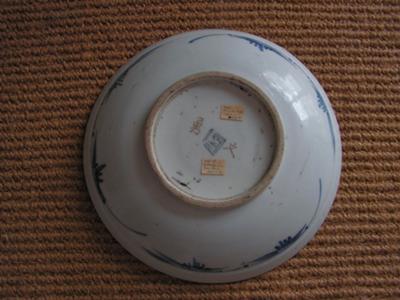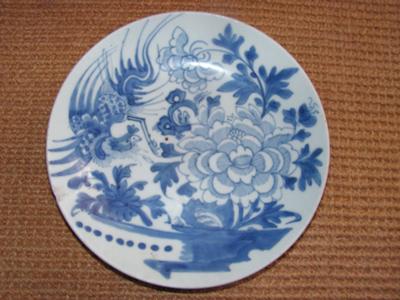Commenting is deactivated.
Please post all new topics and queries to the
Discussion Forum
identifying Vietnamese porcelain dishPICT0018.jpg, PICT0019.jpg
by Diane Kenyon
(Big Island, Hawaii, U.S.)

Reverse of plate showing marks and attached labels
This blue and white plate , about 12 inches in diameter, has some identifying marks on the back plus two small affixed labels. One label says "Hue-Annam kingdom" with illegible number and XX underneath and "1800's". The other says "appraisal from Paris available upon request". Knowing from your site that marks are suspect in identifying a piece I'd love to have more information on it. There is a chip out of the edge. Only the rim is unglazed.I hope the photos come through. Thank you.
PICT0018.jpg, PICT0019.jpg
Comments for identifying Vietnamese porcelain dishPICT0018.jpg, PICT0019.jpg
|
||
|
||
|
||
|
||
search by keyword



